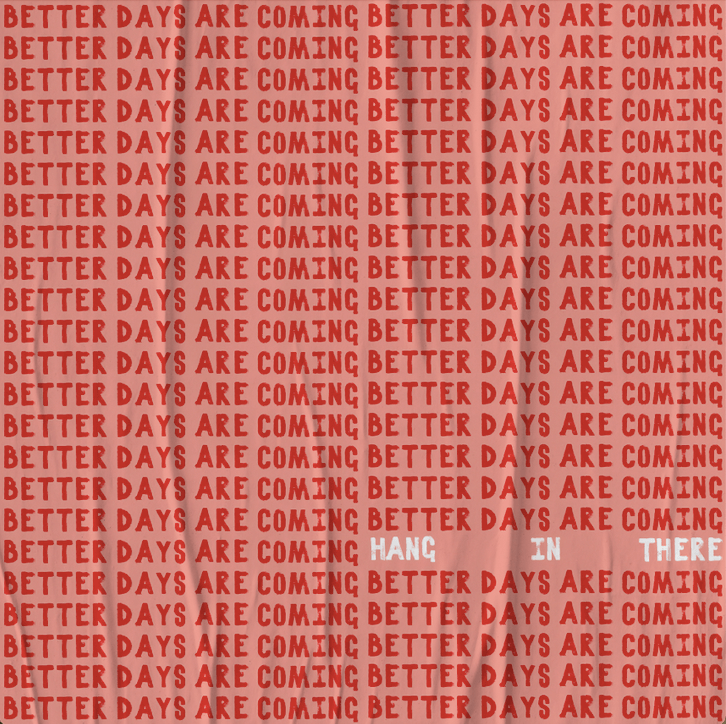I can’t believe it, but this little experiment called Signify turns five years old this month!
This business was born out of a desire to help nonprofits and social enterprises have a bigger impact. After years of volunteering and freelancing for organizations and causes I believed in, I saw how many of them struggled with their marketing and communications. They had so much potential, but either didn’t have the know-how or the manpower to move their mission forward through marketing. I knew that’s where I could help.
And over the past five years, it’s been an absolute privilege to assist social impact organizations in increasing their sales and donations, building larger audiences, and doing more good.
But it hasn’t always been an easy and it hasn’t come without its costs. Being an entrepreneur is not for the faint of heart, and I certainly have more gray hair than I did five years ago!
Recent studies I’ve read say that only 50% of businesses make it this far, and there are days when I clearly understood why. I’d be lying if I didn’t ask myself more than once if this was all worth it. Being the one who makes all the decisions—and all the mistakes—can be exhausting, and there are times when I would’ve just preferred to show up to someone else’s office and collect a paycheck.
However, my mission and my “why” continue to inspire me every day to show up for my clients. I still deeply believe in what I do and the reason I do it, and am grateful to be a part of their story and the difference they make for others. For that reason, I’m here not only today, but hopefully for years to come.
And though there are a heck of a lot of pearls of wisdom I could share (and pitfalls I could tell you to avoid), here are just five of the lessons I’ve learned over the past five years.
1) When Your Motivation Wanes, Your “Why” Picks Up the Slack.
I mentioned this earlier, but being an entrepreneur is hard work. You don’t just have an idea, launch a website, and find yourself sipping cocktails on the beach weeks later with loads of cash to spare . . . no matter what you see on Pinterest.
There are lots of days I questioned my decision to start this business. As a solopreneur, I make all the decisions and the buck always stops with me. Some days I wanted to give up and just find a job where I could punch a clock and collect a paycheck. But I didn’t because my “why” kept me going.
Motivation is fleeting, but if you have a clear and powerful reason that you should show up each day, that’s what will actually drive you and make the headaches and heartaches worth it. I know the difference I want to make (and do make) for nonprofits and social enterprises, and that keeps me going because I feel that purpose deeply and want to live it out.
2) Your Brand Message is Everything.
First of all, if this is a new term for you, let’s clarify: Your brand message is what you want people to understand about your mission. And your brand voice is how you communicate your message.
In working on so many different projects for social impact organizations over the years, I kept seeing the issue of brand messaging crop up. Basically, as founders and entrepreneurs, we all reach a point where we can’t see the forest for the trees.
We begin by sharing our vision with friends and family who are willing to listen to our story and dream with us of what could be. But as we grow and bring others into the mission, we have less time to get our message across and we can’t distinguish what is most important and relevant for this new audience.
The result is confusion, stumbling over our words, rambling, or just a lack of clarity for how this new person fits in other than, “Show me the money.”
So, it is utterly essential to define your brand message, making it clear and compelling for the listener. Once you can express this idea in a way that resonates with your audience, you turn customers and donors into evangelists, which allows you to expand your mission.
Psst—need help clarifying your brand message? I’m here for you!
3) Your Organization Will Only Grow If You Do.
Investing in yourself is critical for convincing others to invest in you. People want to partner with those who are headed somewhere, and growing personally and professionally is a big part of that.
To become the industry leader, the subject matter expert, and the person that boards, donors, and customers put their faith in, you need to be focused on learning and becoming even better at what you do.
This could include:
Taking courses.
Reading books.
Listening to podcasts.
Learning from peers.
And much more!
Seek out educational opportunities wherever you can.
Additionally, part of your growth should come from observation. To move forward, you must take time to reflect.
Too many leaders are only focused on what’s new and next, and don’t take the time to learn from what’s already happened. And, as the saying goes, those who don’t learn from the past are doomed to repeat it.
This is one big reason I plan quarterly retreats. Not only do I use the time for planning, but I look back to see what’s working and what needs to change. I don’t want to keep making the same mistakes. I consider this another opportunity for growth.
4) Strategy Beats Tactics Every Time.
There’s a reason that marketing is so overwhelming for people: There’s always something new to learn or try. It’s a lot to keep up with! Heck, even those of us who do this professionally can’t know everything.
That’s why you need to prioritize strategy over tactics.
For example, social media is always a big topic of conversation with peers and clients. Which platforms should you be on? What do you post? When do you post? What’s the latest change to the algorithm? It’s like a moving target.
But you know what? I personally don’t prioritize it. It’s not that it’s not important, but it’s just not a big part of Signify’s strategy at this time. Instead, for my business model, I primarily focus on content, search engine optimization (SEO), and word-of-mouth referrals. My time is spent in those areas rather than worrying about Facebook’s most recent changes.
Will that always be the case? Probably not, but right now, that’s my plan . . . and I use that word literally. I put my time and energy into those tactics because they are built into my strategy for growth.
If you don’t have a strategy and plan, you’ll always be stressed by tactics. And when marketing distractions pop up, you’ll have no filter to make decisions. So, start with a strategy and let that determine your tactics.
5) Be Courageous Enough to Make the HARD CHOICES.
I wrote an entire post on this topic in January, but part of being a leader means making the tough decisions.
For me, it meant getting a part-time job—and that was an excruciating decision. There was a lot of fear, worry, and anxiety. And even though the basis came from chronic health issues, I still felt like a failure in many ways.
But once the decision was made, I felt like a huge weight was lifted off my shoulders. And I happen to love the team I get to work with now. Plus, I’m able to serve the social impact community in an entirely new way as well as continue to run Signify. #WinWin
There have been plenty of other decisions over the past five years that haven’t had the outcomes I’d hoped, but that’s the gig, right? There’s always some measure of risk, some unpopular decisions, and some times when things don’t go in our favor. It’s what we signed up for as entrepreneurs, founders, and leaders.
But I’d encourage you to be courageous. Gather the facts, calculate the risks, trust your instincts, and take the leap. You’ll never get it 100% right, but that’s also part of the adventure. And, after five years, I can certainly tell you that it’s still an adventure!
What lessons have you learned in founding or running a nonprofit or social enterprise?
PIN THIS POST FOR LATER:
I’m Kristi Porter, and I help cause-focused organizations understand and execute effective marketing campaigns so they can move from stressed to strategic. Your resources may be limited, but your potential isn’t. Whether you’re a nonprofit, social enterprise, or small business who wants to give back, I’ll show you how to have a bigger impact.







































